Aceh (also referred to as Atjeh, Atjin, Acheen Achin.) is at the northern tip of Sumatra in Indonesia. It is believed to be one of the oldest kingdoms in Indonesia. Hindu and Buddist influence from India may have reached Aceh as early as the first century. sixth century A.D. Chinese chronicles. spoke of a kingdom on the northern tip of Sumatra named Po-Li. It is believed that Islam likely first entered the Indonesian archipelago through Aceh sometime between the 8th and 12th century. In 1292, Marco Polo, on his epic voyage from China visited Sumatra on his way to Persia and reported that in the northern part of the island there were at least six busy trading ports including Perlak, Samudera and lambri. With a past like this it is not surprising that their weapons have Hindu, Buddist, Chinese and Islamic influence. The area has an extensive martial history. In the middle of the 14th century, Pasai was invaded by Majapahit soldiers from Java. In 1523, Sultan Ali attacked the Portuguese in Pasai, killing Portugal military commander Horge de Brito. Sultan Ali managed to drive the Portuguese troops out of Pasai. After this defeat, Portugal attempted to conquer Aceh several times, without success. In 1873, the Netherlands declared war and invaded Aceh Darussalam. But the Dutch found it more difficult than they expected to gain control of the whole of Aceh. The Acehnese resisted the occupation, touching off the Aceh War, the longest colonial/expeditionary war fought by the Dutch and claiming more than 10,000 lives. Aceh-Dutch war dragged on until 1914, resistance continued with smaller groups until 1942 when the Japanese arrived in the Dutch East Indies. It has often been said that the Sultanate of Aceh from the 16th century on was in continual struggle. Although a multitude of edged weapons are used in Aceh there are 3 primary weapons that have played a role in Aceh’s history. They are the rencong, Siwaih ( Siwah, Sewar, Siwar) and peudeueng. This article will deal with the peudeueng. As I gain more imformation this will be updated and more sword types may be added. Nothing in this should be considered new or original work on my part. Instead this is a compilation of what so many people have been kind enough to share with me, and what published material I have been able to access. I am certain there are inaccuracies here that are the result of honest mistakes. They will be corrected as I am made aware of them or find better information. That is one large advantage a web based article has. Unlike the published word wich can only be as good as the information at the time of publishing; the web based article can be udated and changed.
The Aceh long sword is called the peudeung. While these swords are attributed to the Aceh it is almost certain they were used also by other ethnic groups in the area. There is evidence of its use as a weapon at least as far back as the 17th century. It may have been used singly, with dual swords or with a small round shield called a peurise. It should be noted that these swords are also often called by other names. In the very complete reference book, TRADITIONAL WEAPONS OF THE INDONESIAN ARCHIPELAGO. by A.G. Van Zonneveld they are referred to as a "Pedang I" "Sikin Pasangan" and" Sikin Panjang" Numerous other sources including Dominique Buttin's excellent site call it a "Sikin" ( Sikim , Sikkim, Sekem ). In a correspondence with Dominique Buttin, he informed the that, "The name Peudeung means sword, which is the same meaning as Podang from the Batak or Pedang from the Javanese." A major problem with deciding which name to use for these swords comes from the fact that there are 10 subethnic groups of acehnesse (such as Aceh , Gayo, Alas, Aneuk Jamee, Melayu Tamiang, Kluet, Devayan, Sigulai, Haloban and Julu ) Here I will use the term used in the most of the Dutch sources and that is "Peudeueng" . A review of the literature seems to divide peudeueng by blade style and type if hilt. The straight bladed swords are called peudeueng panjang ( sikin panjang, sikin pandjang, loedjo Aceh, ). Curved blades peudeueng are called peudeueng peusangan ( peudeueng pasangan , sikin peusangan, sikin pasagan, pedang, poedeung ).

A peudeueng panjang with a hulu tumpang beunteung ( Hulul Buaya)

A peudeueng peusangan with a hulu meu apet

A peudeueng peusangan with a hulu tumpang beunteung (HuluPasangan)
The other division for Aceh swords is by type or shape of the hilt or hulu, In "Hands of Time: The Crafts of Aceh", by Barbara Leigh, 1989, Jakarta she describes them as "hilt like the tail of a cat", "hilt like the mouth of a crocodile", "hilt like the horns of a deer", "hilt like the legs of a horse", and "hilt like the tail of a duck" While all of these may be found on other Aceh swords; I have only found 4 types of hulu on peudeueng. The hilt that looks like the open mouth of an animal ( or crocodile) is called hulu tumpang beunteung in Gayo or Hulu Buaya in Aceh. This type of hilt can be seen on both peudeueng panjang and peudeueng peusangan. In one variant of this the tips come together till they almost touch with flattened ends. This style I was told by an Acheen smith is still called a hulu Buaya but some books also call it a Hulu Peusangan. Peusangan is the name of a river and the name of a subdistrict in Bireuen, Aceh The third type is usually seen only on the peudeueng panjang is called a Hulu Rumpung.

a close up of a hulu tumpang beunteung (Hulu Pasangan)
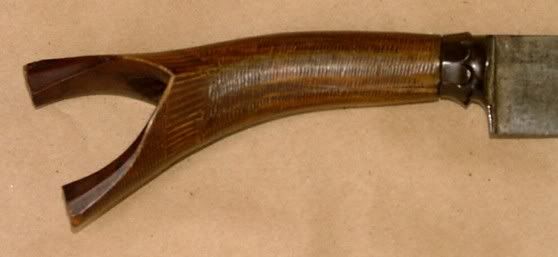
A peudeueng panjang with a hulu tumpang beunteung ( Hulul Buaya)
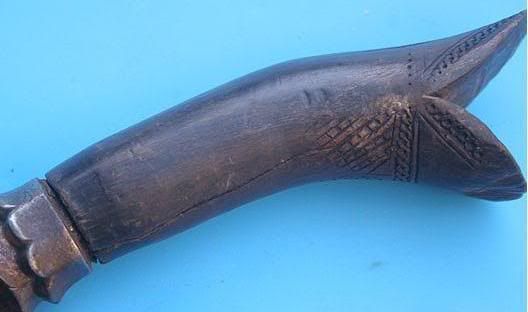
A peudeueng panjang with a hulu rumpung
The fourth type of hilt that is seen on peudeueng is called Hulu Meu Apet (Hulu Muapit in Gayo or Sukul Mekepit in Alas). Hulu means hilt Meu is a verb Apet ( jaga / kawal) means guarded ; so this may simply mean "guarded hilt". Some other sources call this hilt Daun Tebu. Duan Tebu means Sugar Cane Leaf and the end of the hilt on this is said to resemble a sprouting sugar cane. The hulu meu apet strongly resembles Indian sword hilts seen on the khanda and firangi, but the end spike is shorter.

a close up of a a Hulu Meu Apet
Recently Ariel Barkan, on the forum at www.vikingsword.com, noticed that it also is influenced by the Indian Gulabghati hilt, named so because its upper disk has concentric lines resembling a rose flower, "gulab". More on this style of hilt can be found in Indian Arms and Armour by G.N. Pant.



The Indian Gulabghati hilt from Pant’s book ( left) compared to the Hulu Meu Apet (center and right)
Rarely a Hulu Meu apet is seen with a knob at the end of the hilt, this is sometimes called a Peudeueng meutampoh. Perhaps this should be considered a separate style of hilt


Albert G. Van Zonnenveld states in his book, that the peudeueng peusangan with the Hulu Meu Apet was largely of foreign manufacture and did not gain great favor. His feeling is that because of that this variant may be largely ceremonial. That may be true today, however, photos taken during the Dutch-Aceh war can be found with this sword being used. While ornate specimens can be found; the majority of the hulu meu apet I have encountered or seen pictures of are designed for function and not overly ornate. The scabbards normally found with them are also rather austere. Specimens can be found with signs of damage usually associated with battle damage. The sword with the hulu meu apet was even found on several battle flags. In addition examples of these swords can be found with Azimat in them or on the sheath to protect the bearer in battle.
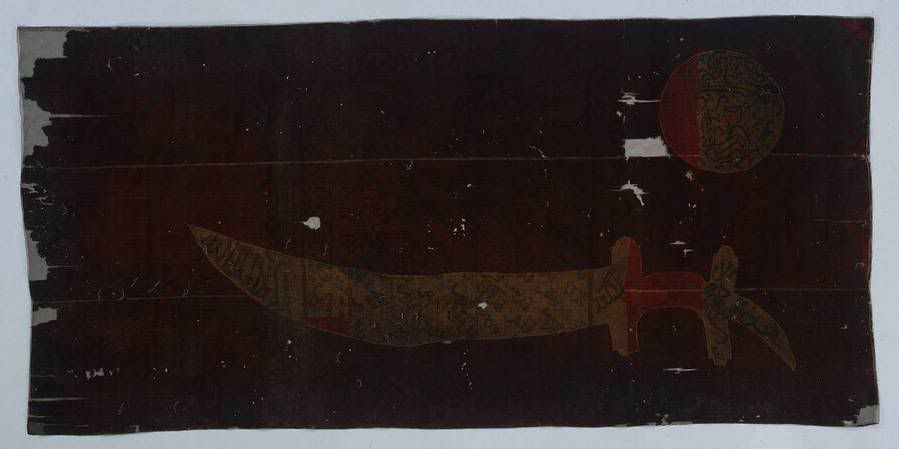
This flag has - literally - been soaked in blood: laboratory research has confirmed that the flag has a bullet hole and bears blood stains. This was probably the blood of first lieutenant C.H. Bischoff. It was he who captured the flag for booty during the storming of a 'benteng' (Malay for fort) held by the Achinese enemy in 1840. Bischoff paid for his escapade with eleven wounds inflicted by enemy klewangs. The klewang was originally a native Atjeh sword: 'gliwang'. Towards the end of the 19th century it became a characteristic feature of the Dutch East Indian soldier's uniform. The sword widens at the tip of the blade which, together with the handle, forms a curved line.. He was carried off wrapped in the flag. Several days later, on 3 May 1840, Bischoff died of his wounds. Before passing away, he was promoted to the rank of captain for his heroic deed.
Photo of a battle flag in the collection of the Rijksmuseum Amsterdam
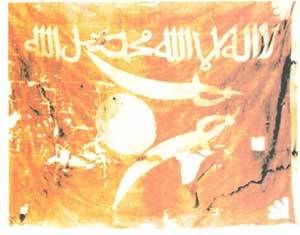
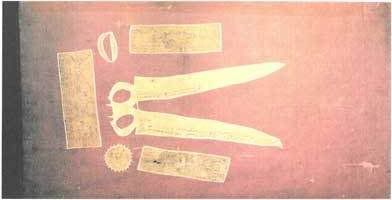
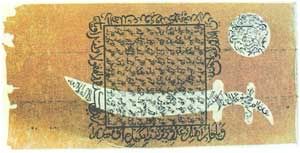
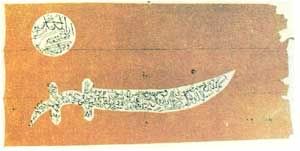
The scabbards for the peudeueng peusangan with a hulu meu apet are usually wood covered with leather. Some are adorned with silver banding . Scabbards for a peudeueng peusangan with a hulu tumpang beunteung and the peudeueng panjang are of wood and can be found both ornate and plain

A typical scabbard for a peudeueng peusangan with a hulu meu apet



A typical scabbard for a peudeueng peusangan with a hulu tumpang beunteung

A scabbard for a peudeueng panjang

In March of 2006 some information was revealed about some of the spiritual beliefs and rituals surrounding these swords. It appears that there are parallels to the the anting ( or anting-anting ) used on Philippine weapons. These talismans are called tangkal or azimat/zimat or jimat. These talismans contained protective verses or religious verses from the Quranic verses ( perhaps again a parallel to the Phillipine practice of Oracion ). This came to light on a thread on Vikingsword.com. In this discussion a tangkal or azimat was posted that came from under the hand guard of a peudeueng peusangan with a hulu meu apet. This is an area that I hope to be able to do more research on and post the findings here. My thanks to Fazli Ibrahim for helping me with information on this.
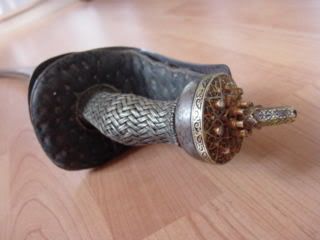
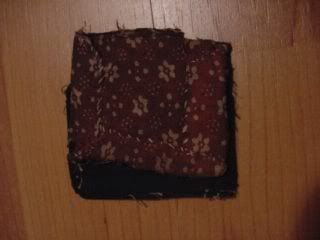


Here is the sword that the azimat was found in and the bag that contained it
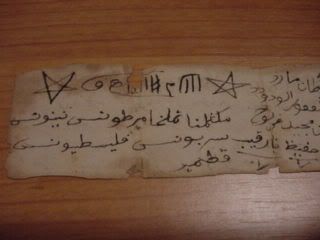
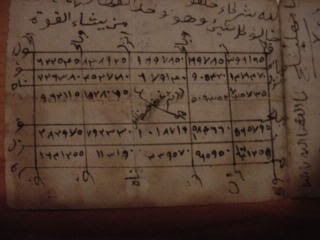
Some pictures of the azimat in that sword handle. The portion between the 2 stars is known as Khatimus Sulaiman;.
It's purpose is to protect it's wearer against "black magic" and evil spirits.
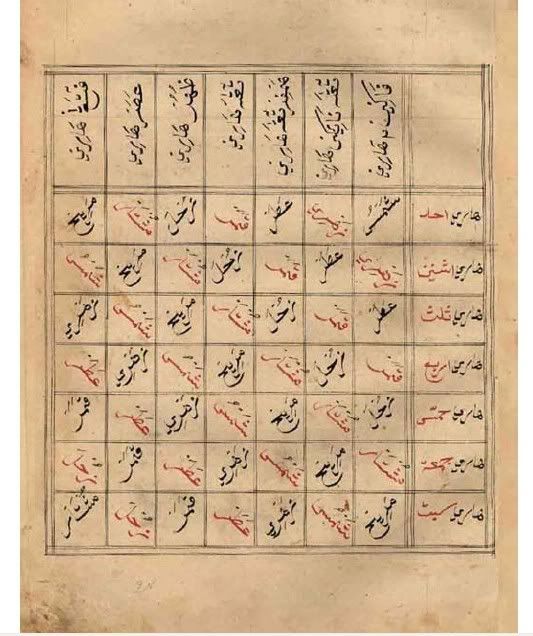
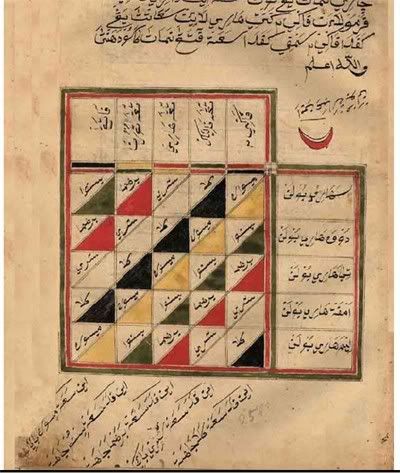

Some Aceh swords have a vegatative motif at the throat called Pucuk Rebung. The V shaped Pucuk Rebung represents sprouting bamboo
According to some acehnesse, if there is gold on hilt / handle / scabbard the sword only can be made for or owned by Panglima ( commander , chieftains ), teungku ( the noblility ) and other highly respected persons.
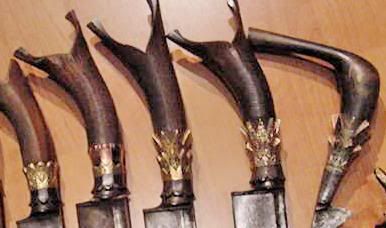







According to some acehnesse, if there is gold on hilt / handle / scabbard the sword only can be made for or owned by Panglima ( commander , chieftains ), teungku ( the noblility ) and other highly respected persons.

Here are some photographs of Aceh warriors with the peudeueng.


A photograph of Aceh warriors ( right photo) with the peudeueng and a rencong from “Blanke Wapens” by JG Dieles. One has a of a hulu tumpang beunteung ( right ) the other a hulu meu apet ( left) . The photograph on the far right shows the source book.


“Acehnese noblemen” from: Catalogus van ‘s Rijks Ethnographisch Museum, part VI (1912), plate V; (Museum of Ethnography in Leiden, the Netherlands, now “RMV Leiden”).



Special thanks to Paul Vermeiren, Erik Farrow, Ariel Barkan, Paul Hansen and Dominique Buttin
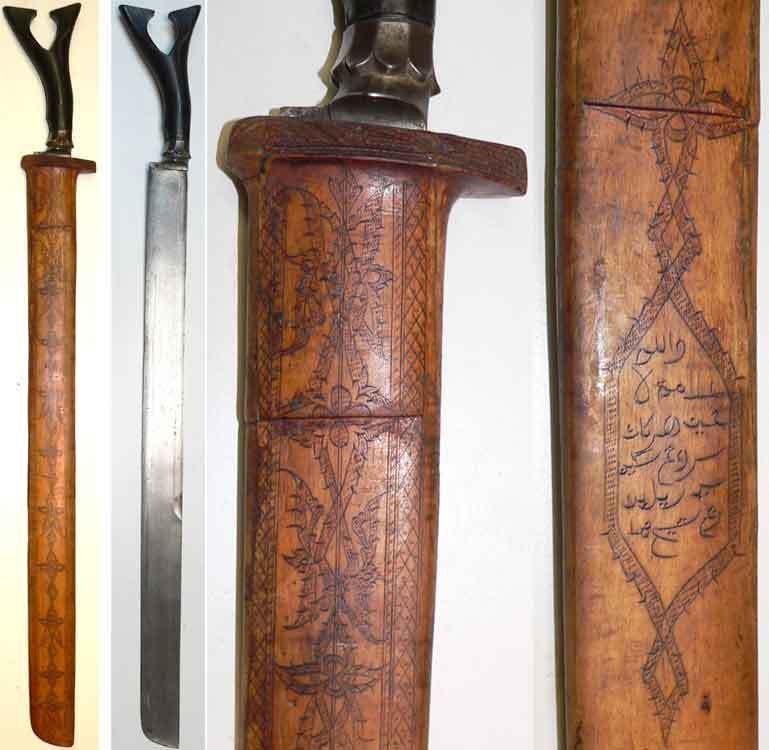
References
1) "Hands of Time: The Crafts of Aceh", by Barbara Leigh, Djambatan - Jakarta, 1989
2) "Traditional Weapons of the Indonesian Archipelago" by Albert G. van Zonneveld C. Zwartenkot Art Books - Leiden; Spring
3) 2001OLD BLADES - Malay World Edged Weapons. Copyright © 2000 - 2005
Revised: 2005-04-03
Revised: 2005-04-03
4) “Indian Arms and Armour” by GN Pant 1978
5) . Lombard, D. 1967: Planches IV dan V. Gambar 21 A.
6) Catalogus van ‘s Rijks Ethnographisch Museum, part VI (1912), plate V; (Museum of Ethnography in Leiden, the Netherlands, now “RMV Leiden”).
7) The Weapons and Fighting Arts of Indonesia, by Don F. Draeger Tuttle, Publishing 1972
By John T. Crosby http://home.comcast.net/~jtcrosby/Aceh.html











0 komentar:
Posting Komentar